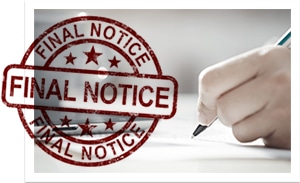

Is getting paid art or science? The proponents of the “Art” argument will say that getting paid needs the personal touch – one needs to know who to talk to, when, what to say and how to push. While we don’t discount the personal touch (and will use it in specifically chosen cases), we view getting paid as clearly a numbers problem, one that lends itself well to optimization and analysis. What can you learn from our experience so you can write and send better demands for payment?
When To Send Demands for Payment
Optimizing sending day and time is crucial, since you want to place the demand for payment so it gets the most attention. Before that, though, comes the simplest optimization of all: send an invoice immediately after work is done. Every day you wait delays your payment, even if the customer pays immediately upon receipt. There’s no need to wait.
What are ideal times for sending a demand for payment? Our data shows that Thursday afternoon and Friday are the strongest days. It makes sense, intuitively – your customer has more time to respond since the post-weekend craziness has subsided. On Friday, they might be calm and thinking about the weekend. Either way, the data clearly shows these days and times to be ideal.
Better Demands for Payment: Email or Letter?
Unfortunately, it depends. Using emails vs. letters is clear when the cost is prohibitive (letters are much more expensive), if you’re dealing with customers who are less technical (and are less likely to answer or read emails) or when timing and promptness are extremely important (letters are unpredictable). Beyond that, here are a few pros and cons to consider:
- Direct mail has much higher open and response rates than email. Even sophisticated users have grown so accustomed to email, that they tend to open it much less.
- Emails allow direct response. It’s harder, though far from impossible, to allow quick online payments through a letter (TrueAccord customers have this option enabled in their Debtor Dashboard, so they can easily pay online even after getting a letter).
- Emails allow much more testing and iteration. If you have a large number of debts, the aptitude and time, you can improve your email response rate much more than you would letters.
At the end of the day, both methods are helpful when used in conjunction, and sometimes followed up with a call or a text message. Combining communication channels is an issue we spend a lot of time thinking about.
What Should the Demands for Payment Say?
If you’re wondering about the content, we have two pieces of advice for you. First, read our short guide about 3 Invoice Design Tips. This will get you started. Then, wait for and download our upcoming eBook – Collection Letters That Work. It will provide a great starting point for everything direct mail.
Bottom Line
Getting paid on time is a science, although there aren’t many available sources that tell you where to start. Future posts will share more of our insights about writing, designing and delivering great demands for payment.
What’s your advice on getting paid on time? Share with us in the comments!